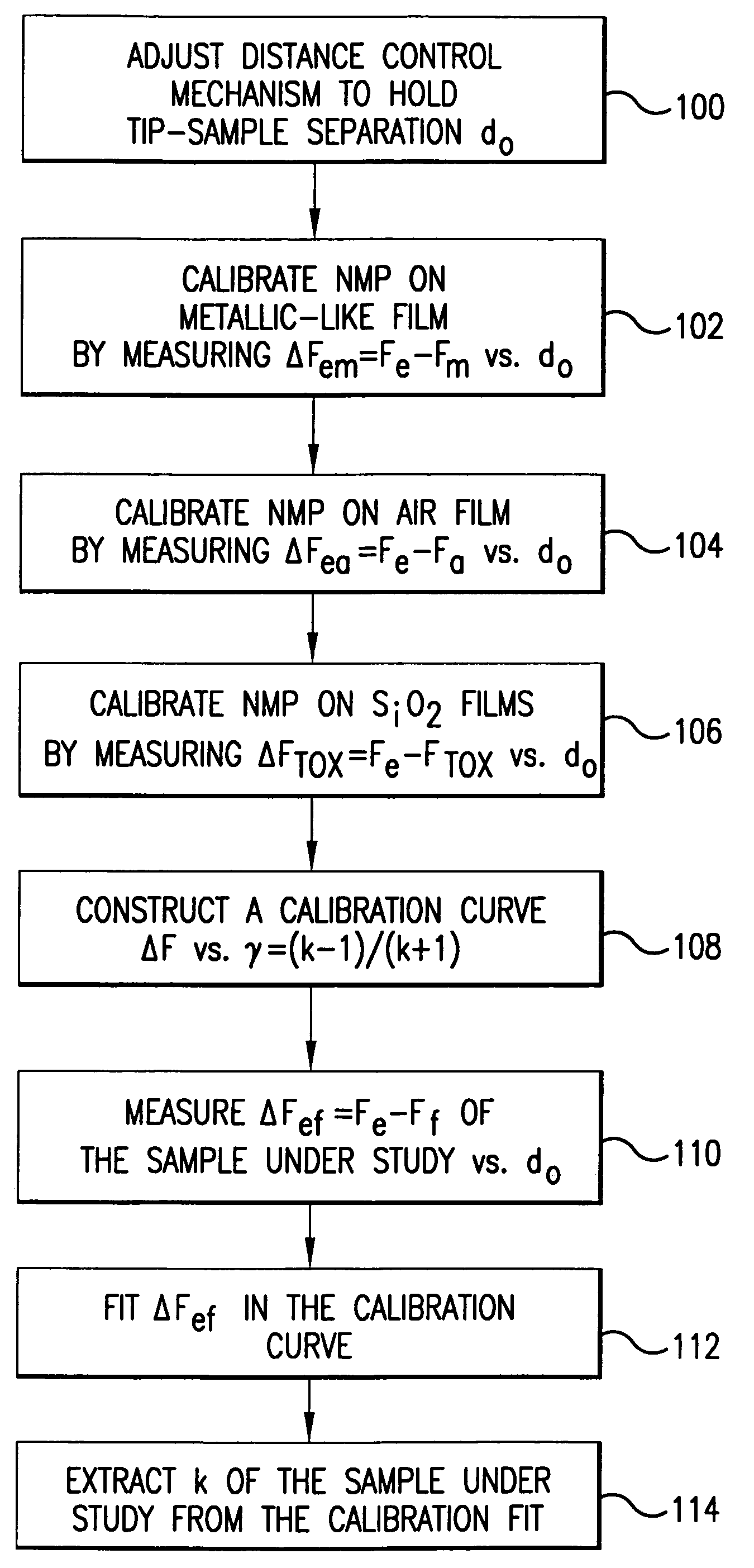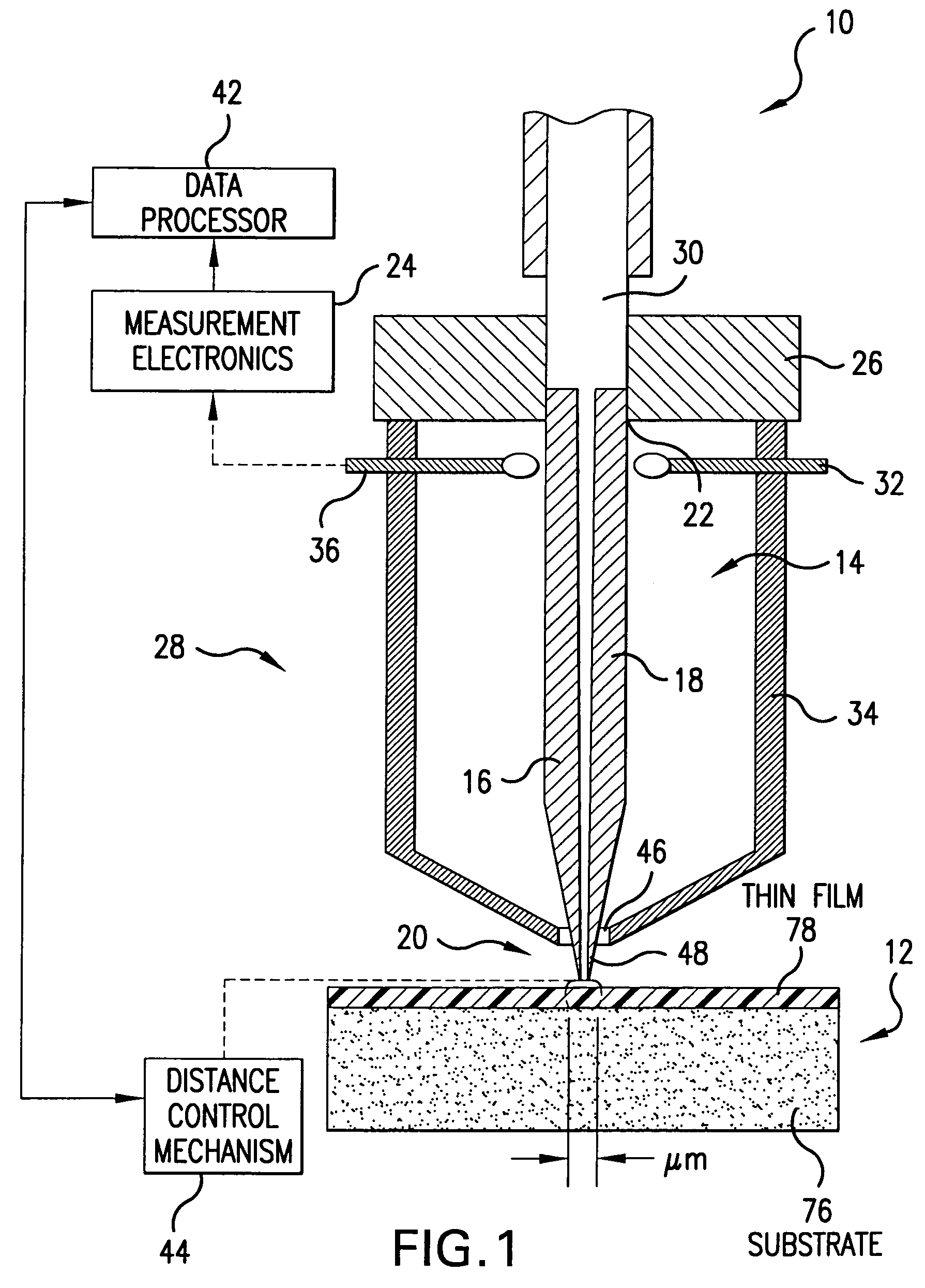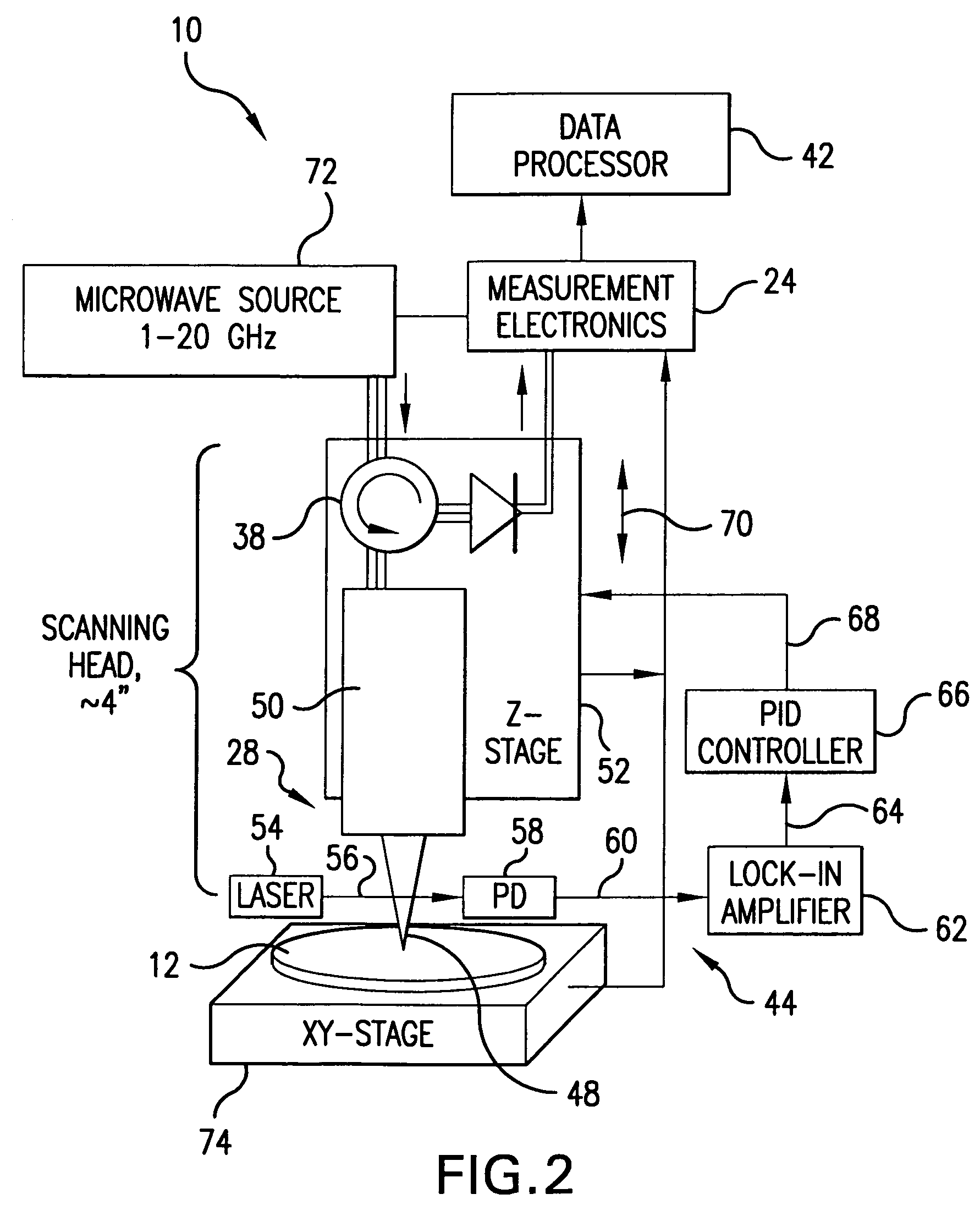Method and system for measurement of dielectric constant of thin films using a near field microwave probe
a near field microwave and dielectric constant technology, applied in the field of measurement techniques, can solve the problems of difficult alignment, hg-probe contamination of wafers, difficult to accurately determine the dielectric constant, etc., and achieve the effect of high-precision determination of the dielectric constan
- Summary
- Abstract
- Description
- Claims
- Application Information
AI Technical Summary
Benefits of technology
Problems solved by technology
Method used
Image
Examples
Embodiment Construction
[0056]Referring to FIGS. 1 and 2, there is shown a near-field microwave probe system 10 for non-destructive determination of the dielectric constant (permittivity) of a sample 12 which is based on a balanced two conductor transmission line 14 which includes two spatially separated symmetrically arranged electrical conductors 16 and 18 of circular, semi-circular, rectangular, or similar cross-section contour. The conductors may be formed from copper, tungsten STM tips, gold, silver, or aluminum strips deposited onto a glass fiber as will be detailed in following paragraphs. A probing end 20 of the transmission line 14 is brought in close proximity to the sample 12 and an opposite end 22 of the transmission line 14 is either connected to measurement electronics 24 for the determination of a reflected signal's phase and magnitude, or to a terminating plate 26 to form a resonator structure 28 for the purposes described in the following paragraphs.
[0057]The probe 10 is primarily envision...
PUM
| Property | Measurement | Unit |
|---|---|---|
| distance | aaaaa | aaaaa |
| dielectric constant | aaaaa | aaaaa |
| diameter | aaaaa | aaaaa |
Abstract
Description
Claims
Application Information
 Login to View More
Login to View More - R&D
- Intellectual Property
- Life Sciences
- Materials
- Tech Scout
- Unparalleled Data Quality
- Higher Quality Content
- 60% Fewer Hallucinations
Browse by: Latest US Patents, China's latest patents, Technical Efficacy Thesaurus, Application Domain, Technology Topic, Popular Technical Reports.
© 2025 PatSnap. All rights reserved.Legal|Privacy policy|Modern Slavery Act Transparency Statement|Sitemap|About US| Contact US: help@patsnap.com



